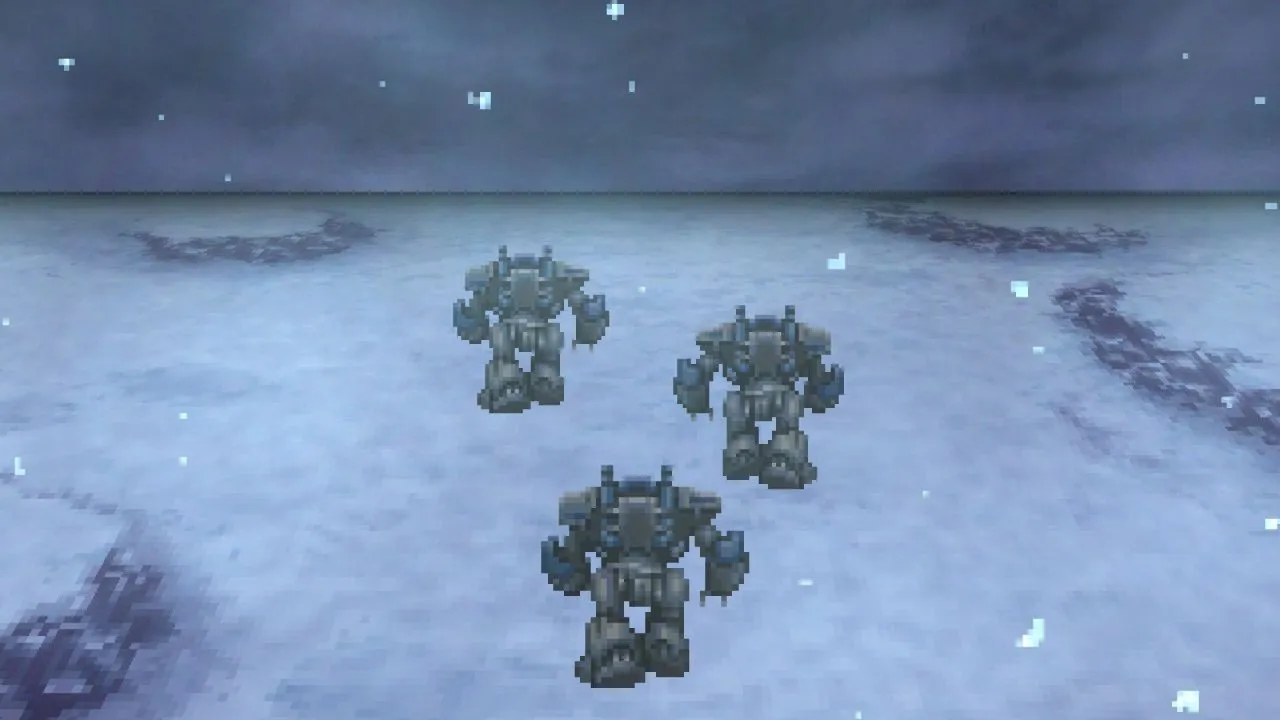
Final Fantasy VI Pixel Remaster: A Timeless Classic Reborn
Contents
Final Fantasy VII and X often dominate discussions of the best Final Fantasy games, captivating players with their 3D graphics and memorable stories. Yet, lurking in the shadows, consistently earning top rankings in polls and discussions, is Final Fantasy VI. Often overlooked due to its 2D pixel art, Final Fantasy VI Pixel Remaster emerges to reclaim its rightful place among the greats, showcasing a timeless experience that transcends graphical limitations. Does this remaster finally give this classic the recognition it deserves?
 Terra in Magitek Armor
Terra in Magitek Armor
A Story That Endures
Spoiler Warning: This section contains some story details.
Final Fantasy VI’s narrative begins simply enough, with Terra Branford, enslaved by the Gestahlian Empire, piloting a Magitek Armor to seize a frozen Esper. Terra, a magical being controlled by a slave crown, is unwittingly a tool of war. The encounter with the Esper Valigarmanda shatters her control crown, plunging her into amnesia. Rescued by Locke Cole, a treasure hunter, Terra embarks on a journey to reclaim her memories, setting in motion one of the most compelling storylines in gaming history.
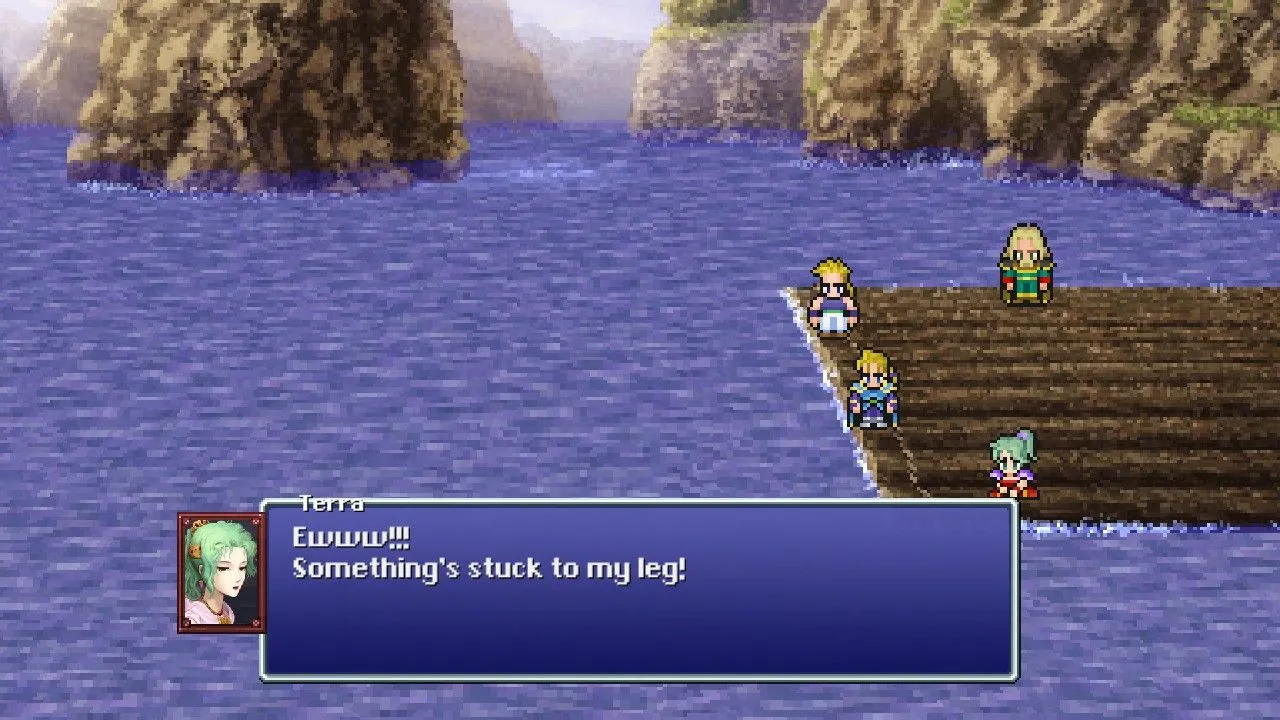 Opening scene in Narshe
Opening scene in Narshe
Nearly three decades after its release, Final Fantasy VI’s story remains captivating. The Pixel Remaster preserves the emotional depth and surprising twists that made the original so memorable. The narrative masterfully weaves together moments of levity and profound tragedy, creating a tapestry of human experience that resonates with players even today. How such a complex and nuanced story fit onto a cartridge with mere megabytes of storage is a testament to the ingenuity of the developers.
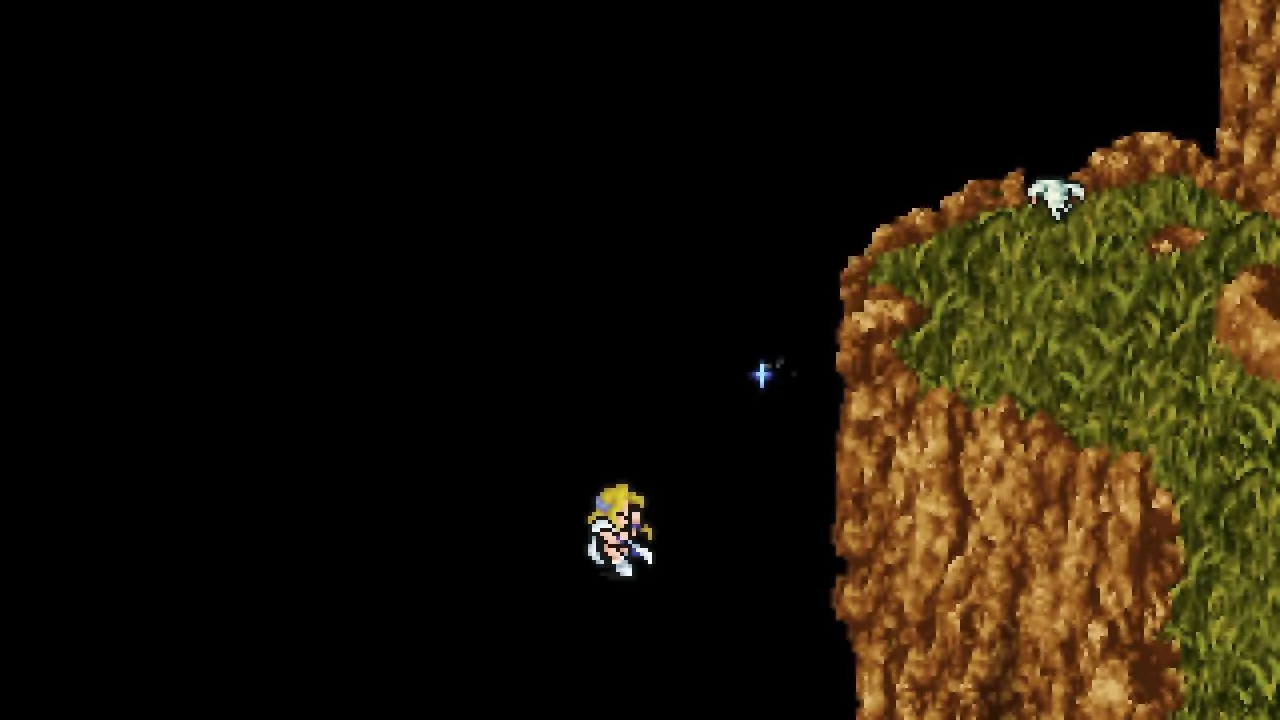 Celes singing Opera
Celes singing Opera
Memorable moments abound: Celes Chere’s poignant opera performance, Cyan Garamonde’s heart-wrenching cries as he confronts the loss of his family, and Celes’ despair leading her to attempt suicide. Final Fantasy VI shatters JRPG conventions of invincible heroes and the power of friendship, forcing players to confront the harsh realities of loss and despair. The villain’s devastating impact on the world leaves a lasting impression, showcasing a level of vulnerability rarely seen in the genre.
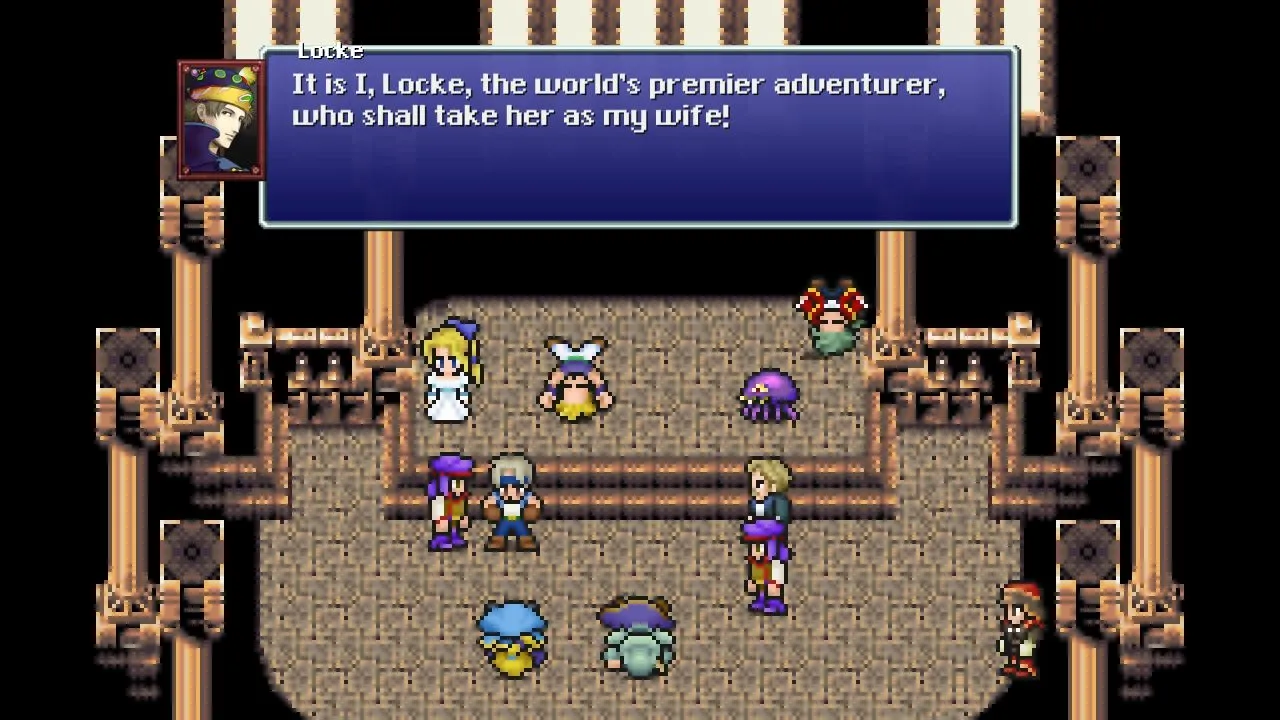 The World of Ruin
The World of Ruin
The story’s complexity extends beyond its main plot. Numerous subplots and hidden secrets enrich the experience, offering players a deeper understanding of the world and its inhabitants. Humorous interludes, like Ultros’s comical obsession with the female party members, provide welcome breaks from the intense drama. The pacing is expertly handled, ensuring the narrative never feels rushed or stagnant.
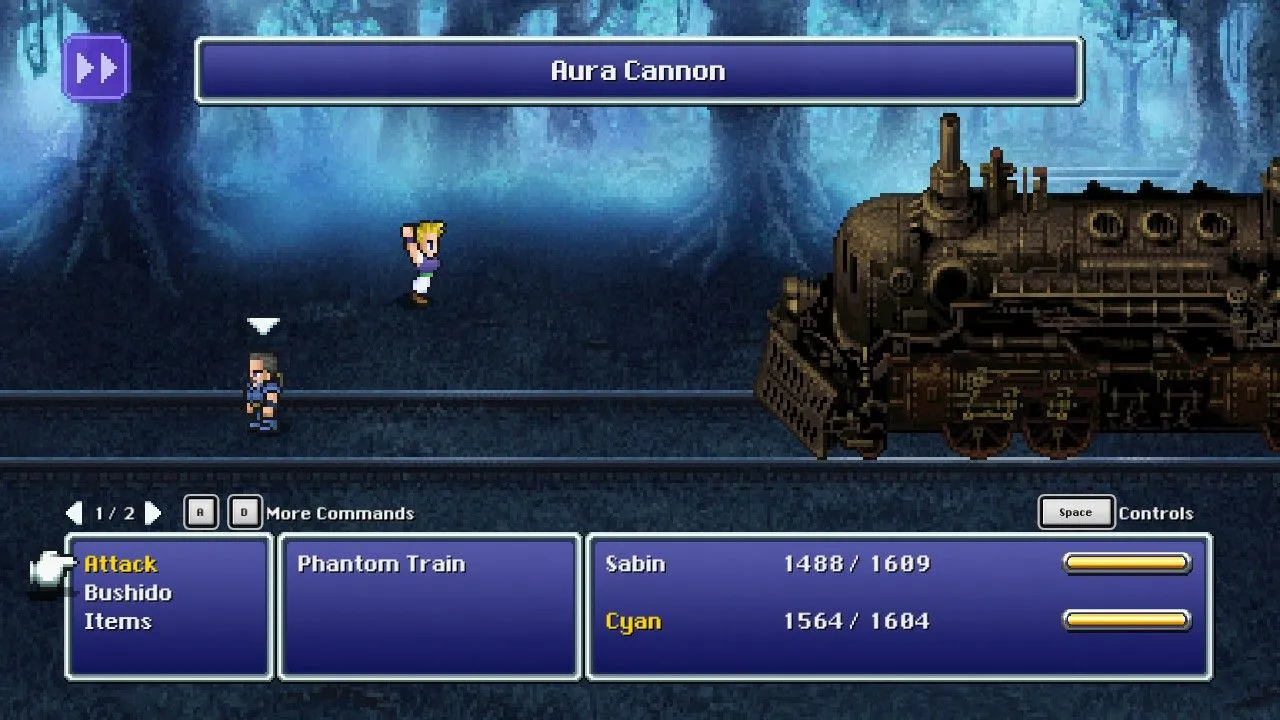 The party travels the world
The party travels the world
With a roster of 14 playable characters, six of whom share the spotlight as central figures, Final Fantasy VI provides a remarkable level of character development. Each character, even those with smaller roles, has a unique backstory and motivations, contributing to the rich tapestry of the narrative. These stories, ranging from the humorous encounter between Gau, Sabin, and Cyan to Setzer’s tragic past, provide a depth rarely seen in JRPGs.
Gameplay: Refined and Engaging
Final Fantasy VI’s Active Time Battle (ATB) system, a hallmark of the series, reaches new heights of complexity. While not an action game, the ATB system creates tense and engaging battles that require strategic thinking. Each of the 14 playable characters has unique abilities, fostering distinct playstyles and strategic depth. Locke’s “Steal” and Celes’s “Runic” are just two examples of these character-specific commands.
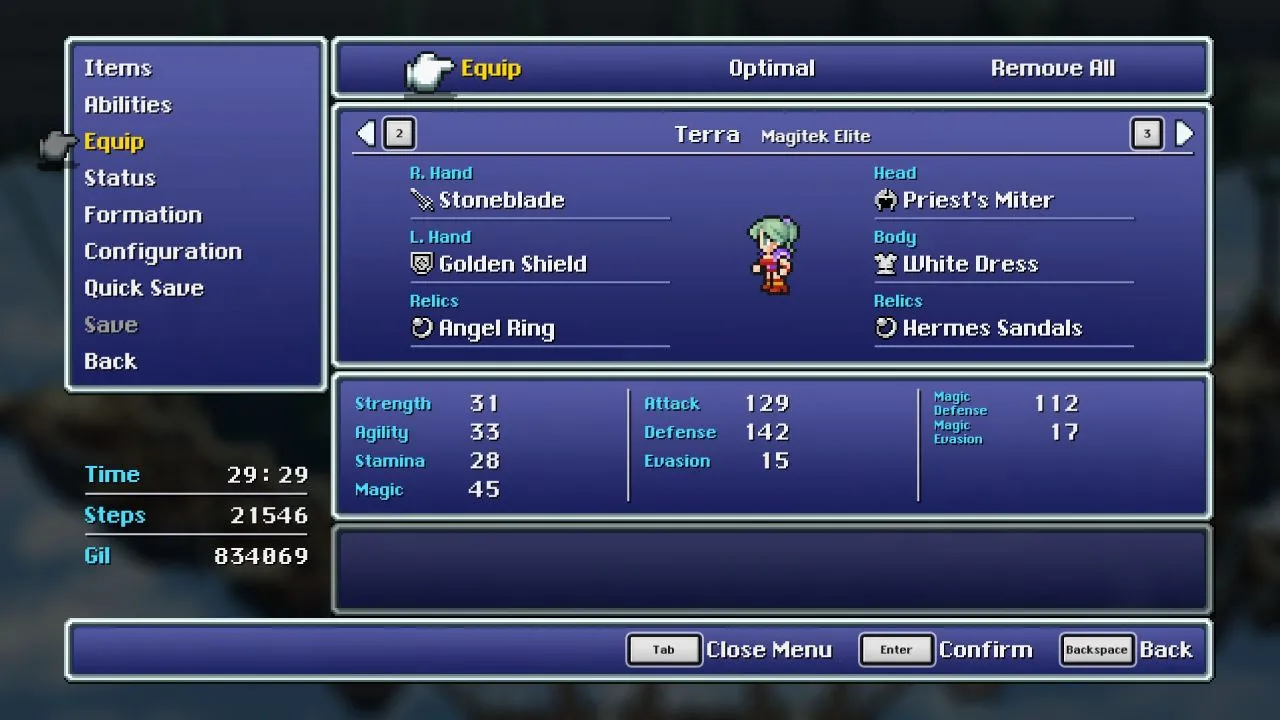 The ATB system in action
The ATB system in action
While character abilities are fixed, customization is still possible through Espers and Relics. Espers grant stat boosts and magic spells, allowing players to tailor character builds, while Relics offer unique effects, such as the Dragoon Boots’ ability to transform regular attacks into jumps. This blend of fixed abilities and customization options offers a satisfying level of player agency.
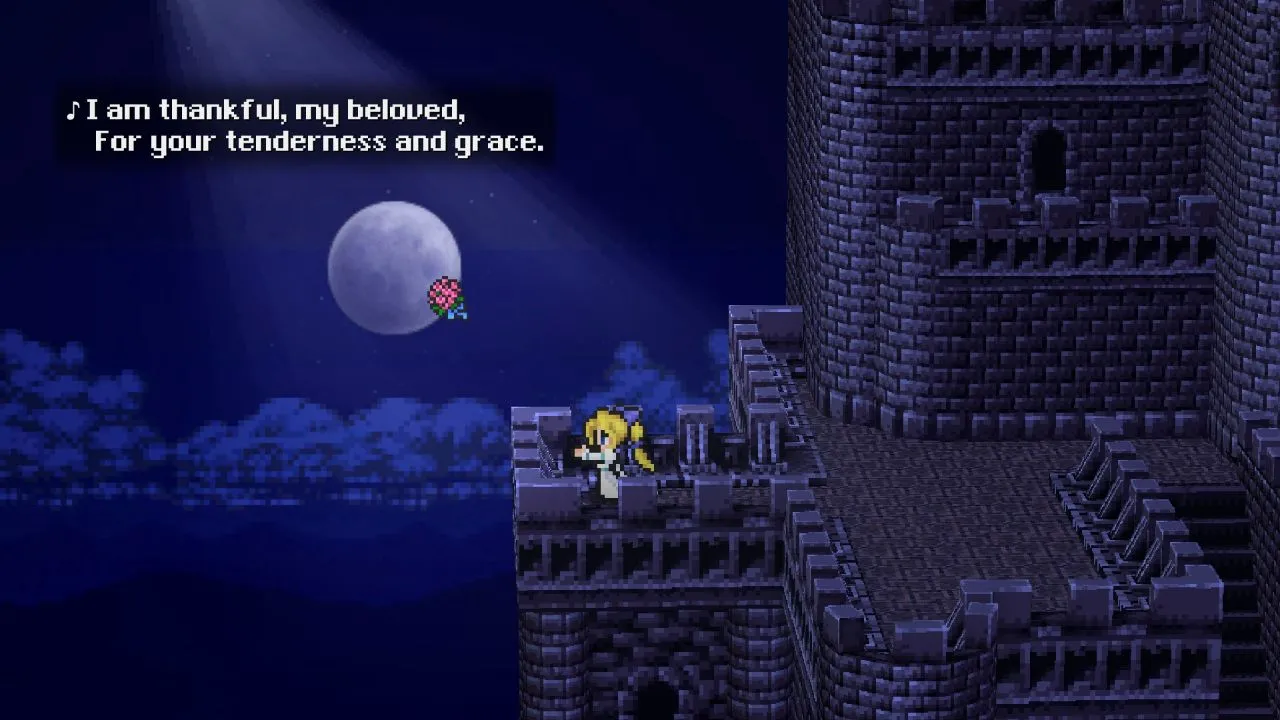 Exploring the World of Ruin
Exploring the World of Ruin
Furthermore, Final Fantasy VI’s open-world structure, a pioneering concept for its time, allows for unparalleled freedom. After a key event, players can explore the world map at their leisure, completing side quests, recruiting characters, or even proceeding directly to the final boss.
Modern Enhancements: A Visual and Aural Treat
The Pixel Remaster revitalizes Final Fantasy VI with significant upgrades to graphics and sound. Character sprites are refined and detailed, preserving the original aesthetic while enhancing visual clarity. However, the most striking improvement lies in the remastered soundtrack. Nobuo Uematsu’s iconic score is reimagined with orchestral arrangements, breathing new life into the beloved melodies.
The opera scene, in particular, showcases the remaster’s attention to detail. Re-created in a 2D-HD style reminiscent of Octopath Traveler, and featuring newly recorded voice acting for Celes, this scene is more impactful than ever before.
Shortcomings: A Few Minor Gripes
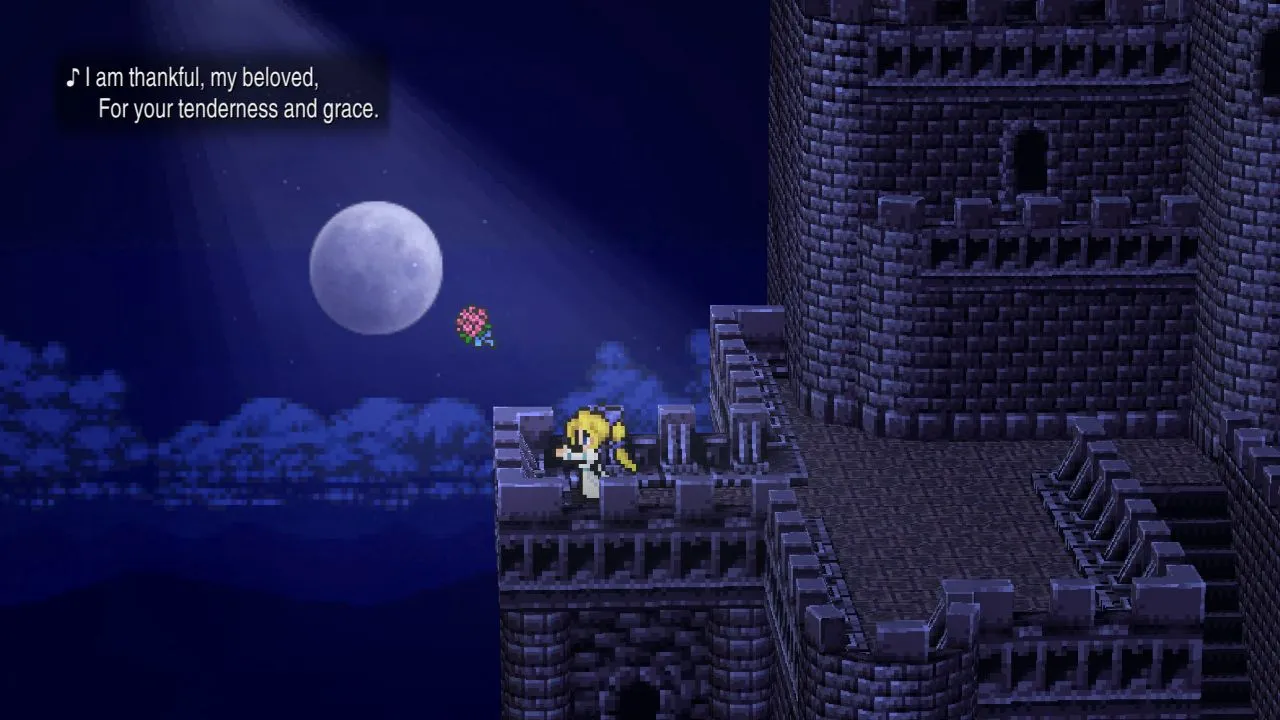 Kefka's laugh
Kefka's laugh
Despite its many strengths, the Pixel Remaster isn’t without its flaws. The widely criticized font from previous Pixel Remasters returns, detracting from the overall presentation. While modders on PC can easily rectify this issue, players on other platforms are left with the suboptimal font.
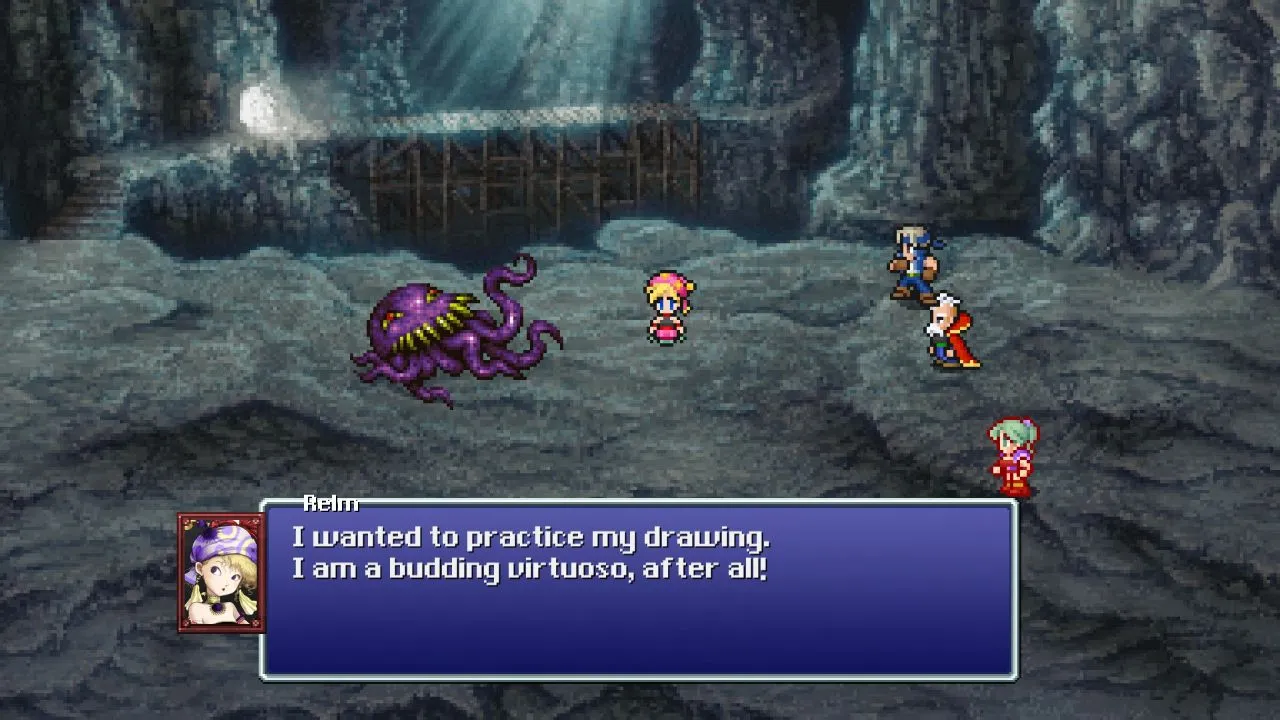 Gau
Gau
Additionally, some quality-of-life features, such as adjustable battle and movement speed, are absent. Furthermore, some content from the Game Boy Advance version, including certain dungeons, appears to be missing.
Conclusion: A Definitive Edition?
Final Fantasy VI Pixel Remaster successfully modernizes a classic without sacrificing its essence. The enhanced visuals, remastered soundtrack, and timeless story make this the definitive way to experience one of the greatest RPGs ever created. While minor shortcomings exist, they do little to diminish the overall brilliance of this remaster. Final Fantasy VI Pixel Remaster is a must-play for both longtime fans and newcomers alike.





Comments (0)